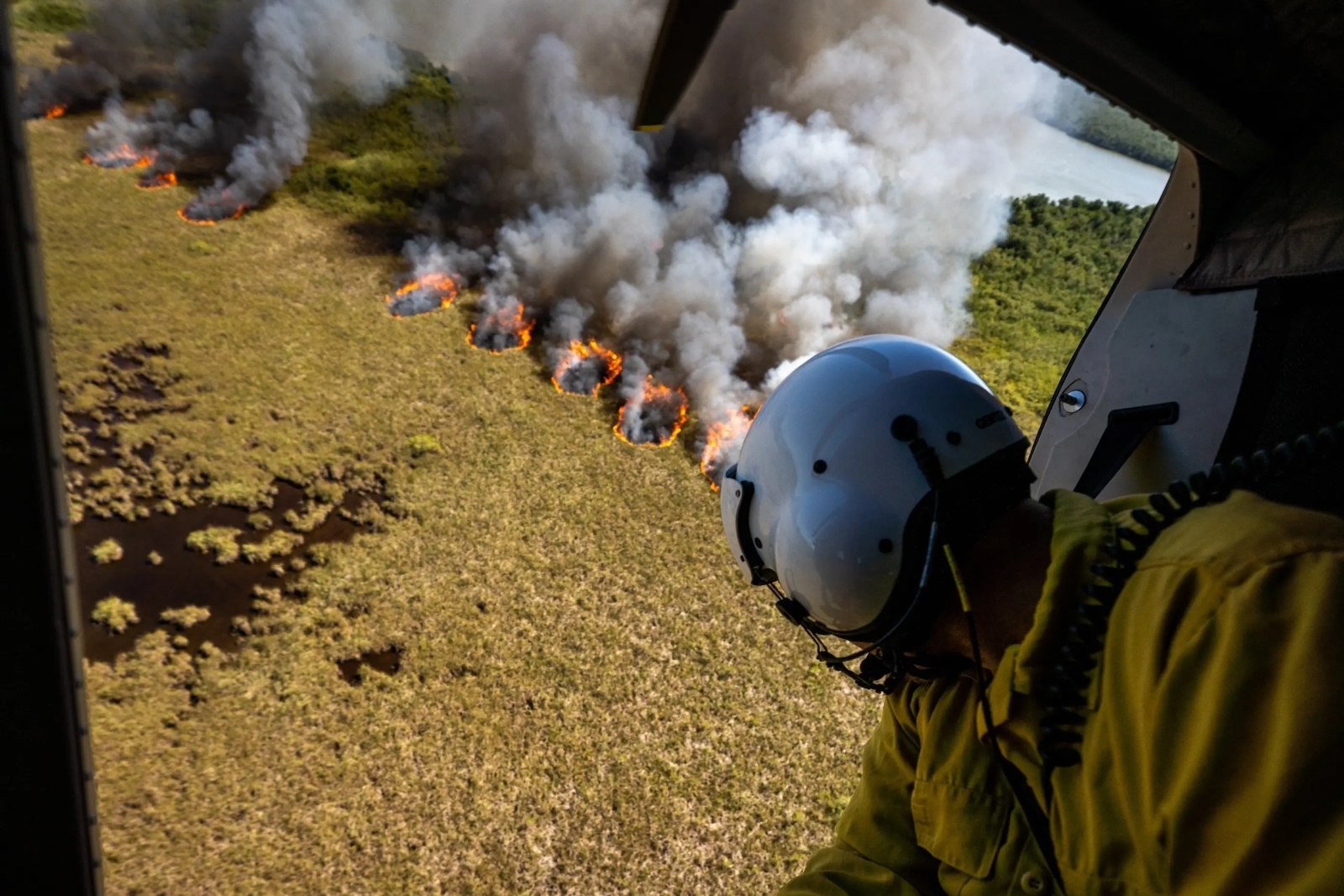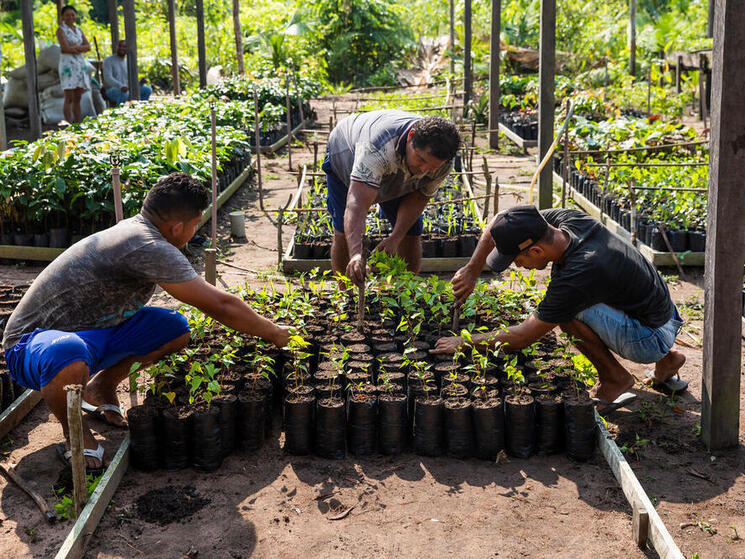
Your weekly guide to Sustainable Investment
TBLI Impact Networking (Virtual Mixer)

Join Us for an Extraordinary Networking Experience: TBLI Virtual Mixer!
4:00 PM - 5:30 PM CET
February 28
Imagine a networking event where you don’t have to sell anything – just be yourself. At the TBLI Mixer, we’ve reimagined how professionals can connect. This is where people who care deeply about sustainability, impact, and creating real change come together.
Meet non-extractive, authentic eccentrics – people from diverse industries who think beyond the ordinary and act for a better world. The conversation flows, the connections are meaningful, and every participant brings something unique to the table.
Development and Funding: “Crisis is Opportunity Riding in a Dangerous Wind”

Is the development world getting it largely wrong in the way it goes about aid targeting? Longtime development analyst and impact investing pioneer Arthur Wood, a 20-year prizewinning campaigner for better funding practices for philanthropy and social society, examines the situation today and what needs to change. (You can also read a summary of Arthur Wood’s analysis HERE)
The U.N. is bringing together development specialists to New York on 10-14 February to prepare the outcome document for the Fourth International Conference on Financing for Development (FfD4) taking place in Seville, Spain, on 30 June – 3 July 2025. Coincidentally, FfD4’s blurb also says: “amid [the] challenges there lies opportunity.” We’ll see.
The structural fault in current development thinking
G.K. Chesterton once referred to “the soft and gentle cynicism of old age [as against] the hard cynicism of youth”. International development is experiencing an undeniable crisis, and in the current climate, Chesterton’s harsher cynicism may be what’s called for.
As a person initiated into the “dark side” of development theory as a lobbyist, defence analyst, and city banker who has worked in development finance since 2005, and as a former Leadership Group member of Ashoka, the American-based citizens organization that promotes social entrepreneurship, I find it difficult to contemplate President Donald Trump’s recent actions and not be reminded of the “Ides of March”, the fateful day that marked Caesar’s assassination and eventually led to the end of Rome as a Republic.
Questionable global impact
In my career so far, I have watched development financing—including impact investment for development—claim to have mobilized trillions of dollars for development: US$5 trillion since 2015. Unfortunately, the effort has mostly had a questionable global impact.
During that time, in spite of the concerted investment, global inequality has soared from 100 million people at the top of the economic ladder possessing the same wealth as the bottom three billion, to the current situation in which less than 5 people at the top of the economic food chain have accumulated personal wealth equal to that possessed by three billion people in the lower half.
…and then there’s global warming
At the same time, global warming has breached the 1.5-degree limit previously marked as the maximum limit for humanity’s eventual survival. Rather than dealing with this existential threat, the current level of economic activity will increase global temperature to 2.5 degrees Celsius by the middle of the next decade. Despite the clear and present danger to human survival, the 2015 Sustainable Development Goals are, in fact, retreating in comparison to the original SDGs agreed to be achieved by 2030. They are now expected to be only achievable in the 22nd century.
Structural mistake of siloing
Development aid has had to face unforeseeable challenges, such as COVID-19, but these destructive trends were in place long before the pandemic.
It should be obvious that we face a structural fault in the current development paradigm.
The highly fragmented framing of development aid, which treats critical issues as a series of separate problems, each consigned to its own silo, or development sector, is simply not working—at least not for the people it is supposed to be helping.
Development vs business approaches
The trend in development today is to base everything on an intermediary’s process and product and then figure out how we can scale it up within the silo, whether the sector involves, for example, health, tourism, manufacturing, or services. This is different from business and finance, in which a replicable client segmentation is determined first and then married to sources of capital with process and product deriving from this analysis.
In other words, development too often starts with a product that already exists that it can deliver, while business first sees what is saleable in the particular circumstances and then delivers it.
The wrong incentives
Today, silo development sectors create incentives that encourage highly inefficient social capital ‘markets’: foundations that simply do not align or leverage their balance sheets (actively use capital market solutions to fund their operations and investments), governments that focus on “blended models” that cannot provide enough of a subsidy; and for-profit venture capital / PE markets whose focus is funding focused on funding (and getting subsidies) in deals.
Read full article
Support for ESG proposals at record low driven by US investors, report shows

Report highlights ‘worrying retreat’ in support for shareholder resolutions on environmental and social risks
Support for shareholder proposals aimed at tackling environmental and social risks hit a record low last year, figures show, amid a “worrying retreat” by investors, particularly in the US.
A report compiled by the responsible investment campaign group ShareAction found that, out of 279 environmental, social and governance (ESG) shareholder resolutions put forward at annual general meetings last year in the UK, Europe and the US, only four – or 1.4% – secured majority support.
It marks a sharp decline from recent years, having dropped from 21% in 2021 to 14% in 2022, and 3% in 2023. However, it also reflects a severe drop in support for ESG issues in the US, where rightwing activists and politicians have targeted financial firms for supporting climate and diversity policies.
Policymakers in Donald Trump’s administration are encouraging a retreat from environmental policies, in favour of support for oil and gas production. The shift has prompted six of the largest banks in the US – Citigroup, Bank of America, Morgan Stanley, Wells Fargo and Goldman Sachs – to withdraw from the UN-sponsored net-zero banking alliance in recent weeks.
Trump has also used executive orders to reverse diversity, equity and inclusion (DEI) policies in the federal government and is trying to apply them to the private sector. Companies including the Google owner, Alphabet and the Facebook owner, Meta, as well as the financial firms Deloitte and Goldman Sachs, have started to roll back their own DEI policies in response.
Shareholder resolutions are usually put forward by campaigners and activists trying to force company directors to address issues including their climate impact, potential human rights abuses, diversity and inclusion policies, and executive pay. While those resolutions are not legally binding, they can put pressure on the board to take action.
ShareAction’s Voting Matters report illustrates the growing divide between asset managers on either side of the Atlantic, with those in the UK and Europe supporting 81% of shareholder ESG proposals on average last year, compared with US peers, who supported just 25% of proposals last year.
It also highlighted the lack of support by the world’s four largest asset managers: BlackRock, Fidelity Investments, State Street Global Advisors and Vanguard. The firms, which are US-headquartered and together manage $23tn (£18tn) in assets, collectively supported just 7% of shareholder resolutions in 2024.
“This is the worst result we’ve seen from asset managers in the six years we’ve been monitoring their voting performance and shows a worrying retreat from ambition when it’s most needed,” said Claudia Gray, head of financial sector research at ShareAction.
“We live in a world where asset managers have a huge impact through the companies they invest in. Many claim to be playing their part in tackling important issues like climate change, yet our report calls into question whether the majority of the world’s wealth is being managed effectively by investment firms,” Gray added.
The campaign group claimed that, had asset managers thrown their weight behind shareholder resolutions, they could have helped improve conditions for low-paid workers struggling with the global cost-of-living crisis and driven climate action at a time when the impact of the climate crisis is devastating communities worldwide.
Just two of the 73 shareholder resolutions focused on climate change received enough shareholder support to pass last year.
“At a time when the climate breakdown is already devastating lives around the world – from prolonged droughts to deadly wildfires – the finance sector should be driving urgent environmental action, not slowing it down,” Gray said. “What’s clear is we need better regulation from policymakers and bold leadership and ambition from decision-makers across the financial sector.”
Commenting on the ShareAction report, a spokesperson for Vanguard said: “The Vanguard-advised funds vote with an unwavering focus on the long-term interests of fund investors, in accordance with their published proxy voting policies.”
A spokesperson for BlackRock said its voting decisions “are based on the long-term financial interests of our clients. For the 2024 proxy year, we found that most environmental and social shareholder proposals were overreaching, lacked economic merit, or were unlikely to promote long-term shareholder value.” It noted that clients had the power to cast votes themselves, including in favour of shareholder resolutions.
Fidelity Investments and State Street were contacted for comment.
Source
How the federal funding and hiring freezes are leaving communities vulnerable to wildfire

Rising temperatures, erratic rainfall, and other climate impacts are throttling cocoa production and driving up chocolate prices.
Just four West African countries are the foundation of an industry worth more than $100 billion. In the tropical nations of Côte d’Ivoire, Ghana, Cameroon, and Nigeria, rows of cacao trees sprout pods bearing dozens of seeds. Once harvested, these humble beans are dried, roasted, and processed into something beloved worldwide.
Chocolate has been coveted for millennia and, particularly on Valentine’s Day, is an unmistakable token of love. But as increasingly erratic weather continues driving up the costs of confectionery, the sweet treat has become a symbol of something much less romantic: climate change.
Two reports published Wednesday found that warming is pushing temperatures beyond the optimal range for cacao growth in the countries at the heart of the world’s supply, particularly during primary harvest seasons. The research reveals how burning oil, coal, and methane is roasting the planet’s cocoa belt and skyrocketing chocolate prices.
“One of the foods that the world most loves is at risk because of climate change,” said Kristina Dahl, vice president for science at the nonprofit Climate Central, which wrote one of the two reports. “I would hope that by hearing that human activity is making it harder to grow cocoa, it might cause people to stop and think about our priorities as a species, and whether we can and should be prioritizing actions to limit future climate change and future harms to this food that we love so much.”
About 70 percent of the world’s cacao is grown in West Africa, with Côte d’Ivoire, Ghana, Cameroon, and Nigeria the biggest producers. The bulk of the rest is grown in places with similar climates not far from the equator, such as Indonesia and Ecuador. The trees grow best in rainforest conditions with high humidity, abundant rain, nitrogen-rich soil, and natural wind buffers. Exposure to temperatures higher than 89.6 degrees Fahrenheit prompts water stress, hinders plant growth, and erodes the quality and quantity of seeds the trees yield.
Last year, warming added at least six weeks’ worth of days above that threshold in nearly two-thirds of cacao-producing areas across Côte d’Ivoire, Ghana, Cameroon, and Nigeria, likely contributing to a disastrous harvest, according to the Climate Central report.
The researchers examined temperature data for the region and estimates of what might have been experienced over the past decade in a world without human-induced warming. They found that between 2015 and 2024, climate change increased the number of days each country experiences temperature ranges above the ideal for cacao growth by an average of two to four weeks annually. Most of those hotter days came during the main crop cycle, when the plants bloom and produce beans. Warming is also altering rain patterns, accelerating droughts, facilitating the spread of devastating diseases like pod rot, and contributing to soil degradation. Another new study found low rates of pollination and higher-than-average temperatures in Ghana have combined to limit yields.
But teasing out just how much of an impact climate change has had on production and consumer prices remains largely unchartered by scientists and economists. Dahl also said it’s unknown which weather phenomenon is behind the largest impact on production, nor is it clear what influence El Niño had on last year’s harvests.
Emmanuel Essah-Mensah, a cocoa grower in Ghana, described climate change as one of the most serious problems affecting production throughout West Africa. “The drought means we are losing 60 percent of our cocoa plants. I have seen a drastic decline in income, as have all the farmers in my farming cooperative,” Essah-Mensah told Grist.
Droughts, floods, and plant diseases thrashing the region last year contributed to record cocoa prices, which in turn caused the cost of chocolate to jump, according to a report by the nonprofit Christian Aid, which works toward sustainable development and economic justice. Global cocoa production fell by about 14 percent in the 2023-24 season, and ahead of Valentine’s Day last year, the soaring price of cocoa on the futures market shattered a 47-year record.
Kat Kramer, co-author of the report and a climate policy consultant for the nonprofit, said the findings, and those of Climate Central, expose the industry’s vulnerability to climate change. “Chocolate lovers need to push companies and their governments to cut greenhouse gas emissions,” said Kramer, “otherwise chocolate supplies will tragically be at increasing climate risk.”
The implications of this go beyond what it means for this delectable delicacy. Cocoa also is used in other goods like cosmetics and pharmaceuticals, which account for a significant piece of the global market. Yet chocolate remains king, with the U.S. importing around $2.8 billion worth of it every year — over 10 percent of the world’s supply.
Federal Reserve data suggests that global cocoa prices rose 144 percent in December, more than doubling from the year before, said Alla Semenova, an economist at St. Mary’s College of Maryland. This is known as the producer price, or what global chocolate manufacturers pay those who process the raw beans. Still, that cost is often absorbed by confectionary customers. “When producer prices rise, when the costs of production rise, consumer prices rise,” said Semenova.
Yet even as prices go up, the farmers raising cacao don’t always see any of that profit. Josephine George Francis, who produces the crop alongside coffee on her farm in Liberia, said farmers throughout West Africa actually lose money due to the rising cost of growing crops in a warming world. “We need a different approach that puts sustainability and farmers at its heart,” said George Francis. “We do not benefit from increased prices on world markets.”
Read full article
Food for Thought: How Impact Investing Can Advance Conservation

Impact investing can play an important role in scaling promising solutions for conservation and food production. That’s why World Wildlife Fund (WWF) launched WWF Impact, a new investing arm that makes impact-first investments into early-stage companies that align with our conservation goals of advancing more sustainable food systems.
Food production—fundamental to human survival—poses a paradoxical challenge. While agriculture produces food necessary for continued human existence, it is also a significant threat to the environment and biodiversity, fueling climate change which in turn impacts us. Nonetheless, if done properly, agriculture can also be a tool for fostering resilience in a way that restores ecosystems and nature. Today, the global food system is responsible for 27% of greenhouse gas (GHG) emissions and is a leading cause of habitat destruction, including 90% of tropical deforestation, according to WWF’s Living Planet 2024.
To both nourish a growing population while also protecting critical ecosystems and nature, new ways of producing and consuming food are needed. Historically, technology has played a fundamental role in transforming food systems. The Green Revolution is one such example, where new breakthroughs in genetic improvement and crop productivity dramatically boosted yields. Today, a new type of agriculture revolution is needed—one which better stewards and respects the planet and does so in a sustainable way. Technologies and innovative business models can be an important part of this transition, providing promising solutions for shifting society towards a more nature-positive food system and advancing WWF’s conservation mission. However, there is often a lack of funding and resources to enable the growth of these promising business models. That is where impact investing comes in—impact-first financing that deploys capital to generate both positive social and environmental outcomes for people and planet.
In the last decade, impact investing has blossomed in sectors like health, education, climate, and gender. A variety of actors are entering this space, from venture capital funds and multinational development banks to charitable organizations like WWF which use investments to advance their missions. Overall, it is estimated that the size of the impact investing field reached $1.57 trillion USD in 2024, growing with a 21% compound annual growth rate (CAGR) since 2019. Impact investors strongly integrate impact into their operations and have an impact-driven investment thesis, in which they only make investments in companies and sectors that further their impact-strategy. The figure below shows where impact investors fall along the “impact-returns” spectrum. Impact funds make investments that prioritize an “impact return” over economic return. This is where WWF Impact operates. We use patient capital to make investments that are economically sustainable, maximize impact, and further WWF’s conservation objectives and charitable mission.
Food system innovations have the potential to bring about new solutions for addressing climate and biodiversity threats. However, these companies often have a hard time fundraising due to their business models and commercialization timeline. These are often not sufficiently quick for most private investment returns expectations. Global financing flows in general—inclusive of public and private sources—have not been sufficient to support nature-positive solutions to some of the most challenging environmental problems. In 2023, $200 billion USD went to Nature-based Solutions (NbS), which is significantly less than the estimated $7 trillion USD in investment that had negative impacts on nature. The majority of funding (82%) for NbS has come from governments, and there is the need to stimulate and attract more private capital to these solutions. The lack of funding—alongside the lack of mentorship and technical assistance—for these companies with high impact potential makes it difficult for new innovations with the potential for positive social and environmental outcomes to grow and prove their business model.
WWF recognizes the potential that impact investing can have for accelerating shifts in the way we produce, distribute, and consume components of the food system, furthering our mission to save nature. Early-stage companies—while nascent—can transform our food system with their novel innovations, technologies, and systems for operating. It is important that they receive patient, impact-aligned capital that can help them improve, scale, and grow their company and impact. Through WWF Impact, we deploy catalytic capital into early-stage companies working in three spaces: aquaculture, food circularity, and regenerative agriculture. Building on WWF’s scientific and conservation expertise, we have developed investment theses for each of these verticals to ensure we can find, support, and help scale promising companies that can shift us towards a more sustainable food system. By channeling patient early-stage capital into these companies, we hope to draw attention to underfunded yet important-for-conservation sectors and help support promising new solutions that can protect ecosystems, nature, and communities.
Source
Why chocolate is ridiculously expensive right now

Rising temperatures, erratic rainfall, and other climate impacts are throttling cocoa production and driving up chocolate prices.
Just four West African countries are the foundation of an industry worth more than $100 billion. In the tropical nations of Côte d’Ivoire, Ghana, Cameroon, and Nigeria, rows of cacao trees sprout pods bearing dozens of seeds. Once harvested, these humble beans are dried, roasted, and processed into something beloved worldwide.
Chocolate has been coveted for millennia and, particularly on Valentine’s Day, is an unmistakable token of love. But as increasingly erratic weather continues driving up the costs of confectionery, the sweet treat has become a symbol of something much less romantic: climate change.
Two reports published Wednesday found that warming is pushing temperatures beyond the optimal range for cacao growth in the countries at the heart of the world’s supply, particularly during primary harvest seasons. The research reveals how burning oil, coal, and methane is roasting the planet’s cocoa belt and skyrocketing chocolate prices.
“One of the foods that the world most loves is at risk because of climate change,” said Kristina Dahl, vice president for science at the nonprofit Climate Central, which wrote one of the two reports. “I would hope that by hearing that human activity is making it harder to grow cocoa, it might cause people to stop and think about our priorities as a species, and whether we can and should be prioritizing actions to limit future climate change and future harms to this food that we love so much.”
About 70 percent of the world’s cacao is grown in West Africa, with Côte d’Ivoire, Ghana, Cameroon, and Nigeria the biggest producers. The bulk of the rest is grown in places with similar climates not far from the equator, such as Indonesia and Ecuador. The trees grow best in rainforest conditions with high humidity, abundant rain, nitrogen-rich soil, and natural wind buffers. Exposure to temperatures higher than 89.6 degrees Fahrenheit prompts water stress, hinders plant growth, and erodes the quality and quantity of seeds the trees yield.
Last year, warming added at least six weeks’ worth of days above that threshold in nearly two-thirds of cacao-producing areas across Côte d’Ivoire, Ghana, Cameroon, and Nigeria, likely contributing to a disastrous harvest, according to the Climate Central report.
The researchers examined temperature data for the region and estimates of what might have been experienced over the past decade in a world without human-induced warming. They found that between 2015 and 2024, climate change increased the number of days each country experiences temperature ranges above the ideal for cacao growth by an average of two to four weeks annually. Most of those hotter days came during the main crop cycle, when the plants bloom and produce beans. Warming is also altering rain patterns, accelerating droughts, facilitating the spread of devastating diseases like pod rot, and contributing to soil degradation. Another new study found low rates of pollination and higher-than-average temperatures in Ghana have combined to limit yields.
But teasing out just how much of an impact climate change has had on production and consumer prices remains largely unchartered by scientists and economists. Dahl also said it’s unknown which weather phenomenon is behind the largest impact on production, nor is it clear what influence El Niño had on last year’s harvests.
Emmanuel Essah-Mensah, a cocoa grower in Ghana, described climate change as one of the most serious problems affecting production throughout West Africa. “The drought means we are losing 60 percent of our cocoa plants. I have seen a drastic decline in income, as have all the farmers in my farming cooperative,” Essah-Mensah told Grist.
Droughts, floods, and plant diseases thrashing the region last year contributed to record cocoa prices, which in turn caused the cost of chocolate to jump, according to a report by the nonprofit Christian Aid, which works toward sustainable development and economic justice. Global cocoa production fell by about 14 percent in the 2023-24 season, and ahead of Valentine’s Day last year, the soaring price of cocoa on the futures market shattered a 47-year record.
Kat Kramer, co-author of the report and a climate policy consultant for the nonprofit, said the findings, and those of Climate Central, expose the industry’s vulnerability to climate change. “Chocolate lovers need to push companies and their governments to cut greenhouse gas emissions,” said Kramer, “otherwise chocolate supplies will tragically be at increasing climate risk.”
The implications of this go beyond what it means for this delectable delicacy. Cocoa also is used in other goods like cosmetics and pharmaceuticals, which account for a significant piece of the global market. Yet chocolate remains king, with the U.S. importing around $2.8 billion worth of it every year — over 10 percent of the world’s supply.
Federal Reserve data suggests that global cocoa prices rose 144 percent in December, more than doubling from the year before, said Alla Semenova, an economist at St. Mary’s College of Maryland. This is known as the producer price, or what global chocolate manufacturers pay those who process the raw beans. Still, that cost is often absorbed by confectionary customers. “When producer prices rise, when the costs of production rise, consumer prices rise,” said Semenova.
Yet even as prices go up, the farmers raising cacao don’t always see any of that profit. Josephine George Francis, who produces the crop alongside coffee on her farm in Liberia, said farmers throughout West Africa actually lose money due to the rising cost of growing crops in a warming world. “We need a different approach that puts sustainability and farmers at its heart,” said George Francis. “We do not benefit from increased prices on world markets.”
https://mail.tbligroup.com/emailapp/index.php/lists/cm138dw4qa9f1/unsubscribe